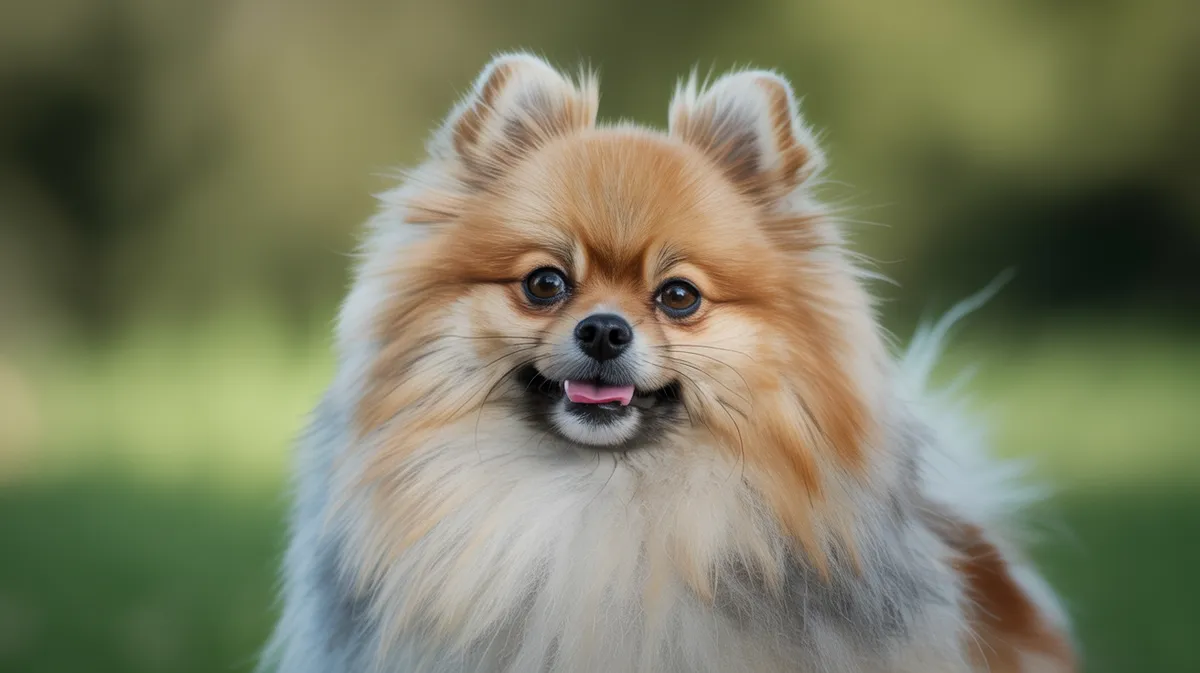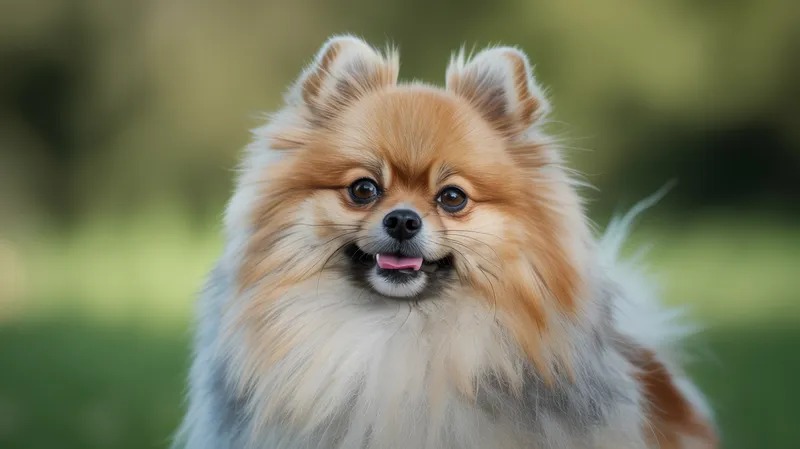
Pomeranian Dog
Canis lupus familiaris

Meet the Pomeranian Dog
The Pomeranian is a small, fluffy breed of domestic dog known for its thick double coat, fox-like face, and lively personality. Originally descended from larger sled-pulling Spitz-type dogs of the Pomerania region in modern-day Poland and Germany, Pomeranians have been bred down in size over centuries. They are highly intelligent, energetic, and social, making them popular companion animals and show dogs. Despite their diminutive stature, Pomeranians are alert, vocal, and have a bold, curious nature.
Classification
Mammal
Habitat
Domesticated; lives primarily in human households
Diet
Omnivore
Lifespan
12-16 years
Conservation
Least Concern
Weight
1.4–3.2 kg (3–7 lbs)
📖Fascinating Facts
Royal Companions
Pomeranians became particularly fashionable in the 19th century after Queen Victoria adopted them, leading to a surge in their popularity across Europe.
Fox-Like Appearance
Their pointed ears, expressive eyes, and bushy tails give Pomeranians a striking, fox-like appearance.
Big Personality
Pomeranians are known for their lively, playful, and confident demeanor, often believing they are much larger than they appear.
📋Detailed Description
The Pomeranian is a diminutive member of the Spitz family, typically weighing between 1.8 and 3.5 kilograms (4–7.7 lbs) and standing 18–24 cm (7–9.5 inches) at the withers. Its most distinctive feature is its luxurious double coat, consisting of a dense, soft undercoat and a longer, harsh-textured outer coat, which forms a prominent ruff around the neck and feathering on the chest and limbs. The breed’s compact, square-proportioned body is complemented by a fox-like face, erect triangular ears, and a high-set, plumed tail that arches over the back. Pomeranians are known for their alert, lively, and extroverted temperament, often displaying intelligence and curiosity that belies their small size. They are highly vocal and possess a strong watchdog instinct, frequently alerting their owners to new stimuli. Social by nature, Pomeranians form strong bonds with their human families and may display both affectionate and independent behaviors. The breed is agile and enjoys play, requiring regular mental and physical stimulation. Anatomically, Pomeranians possess a well-developed jaw with a scissor bite and relatively large, expressive eyes, which contribute to their characteristic facial expression. Their small size and robust constitution are the result of selective breeding from larger Spitz ancestors, with the reduction in size accentuating their energetic and bold personality.
💡 Did you know?
Despite their small size, Pomeranians are often fearless and will challenge dogs much larger than themselves.
🔬Research & Sources
🎭Behavior & Social Structure
Pomeranians are highly active and intelligent, requiring significant mental engagement and regular exercise despite their small stature. They exhibit pronounced territorial and alert behaviors, often barking at unfamiliar sounds or strangers, making them effective watchdogs. Their feeding behavior is typical of small omnivorous breeds: they thrive on a balanced diet of high-quality commercial dog food, supplemented with occasional fruits, vegetables, and lean meats. Pomeranians are known for their playful, inquisitive nature and may engage in fetch, puzzle games, and agility activities. Socially, they form strong attachments to their primary caregivers and may display separation anxiety if left alone for extended periods. While generally friendly, they can be wary of unfamiliar dogs and may exhibit dominance behaviors, especially towards larger breeds. Daily routines typically include periods of high activity interspersed with rest, and they often seek out human companionship throughout the day.
👶Reproduction & Life Cycle
Pomeranians reach sexual maturity between 6 and 9 months of age, though responsible breeding is recommended after 18 months to ensure full physical development. The breed is monoestrous, with females coming into heat approximately twice a year. Mating is typically supervised to prevent injury due to the breed’s small size. The gestation period averages 63 days, after which litters of 1–5 puppies are born, though smaller litters are more common due to the dam’s size. Neonatal care is intensive, as Pomeranian puppies are particularly vulnerable to hypoglycemia and require frequent feeding. Maternal care is strong, with the dam nursing and grooming the puppies for the first 3–4 weeks. Weaning begins at 4–5 weeks, and puppies are typically fully weaned by 8 weeks. Breeding practices emphasize genetic health, as the breed is predisposed to certain hereditary conditions such as patellar luxation and tracheal collapse.
🛡️Adaptations & Survival
The Pomeranian’s thick double coat is an adaptation inherited from its Spitz ancestors, providing insulation against cold climates. Their compact, muscular build and high-set tail are typical of northern dog breeds adapted for agility and endurance. Behaviorally, their alertness and vocal nature are evolutionary traits for sentinel duties, warning of intruders or predators. The breed’s intelligence and trainability are the result of selective breeding for companionship and performance in dog shows. Their small size is a human-driven adaptation, making them well-suited for urban living and close human interaction. Additionally, their high energy and curiosity are retained from their working dog lineage, supporting their need for mental and physical stimulation.
📚Research Sources
🎨Cultural Significance
Pomeranians have held a prominent place in human culture, especially since the 18th century when Queen Victoria of England popularized the breed by breeding smaller Pomeranians and exhibiting them at dog shows. They have been favored by royalty and notable figures, including Marie Antoinette, Wolfgang Amadeus Mozart, and Emile Zola. In art and literature, Pomeranians often symbolize loyalty, vivacity, and elegance. The breed is a frequent participant in dog shows and has been featured in films, advertisements, and as social media icons. While not traditionally used for working purposes, their historical roots as sled and herding dogs in Pomerania are reflected in their energetic and alert demeanor.
🔬Recent Research & Discoveries
Recent genetic studies have traced the Pomeranian’s lineage to ancient Spitz-type dogs, confirming their close relationship with other northern breeds such as the Samoyed and Alaskan Malamute. Ongoing research focuses on breed-specific health issues, particularly alopecia X and tracheal collapse, with advances in veterinary genetics offering improved screening and management. Behavioral studies have highlighted the breed’s high intelligence and trainability, supporting their use in canine cognition research. There is also increasing interest in the impact of selective breeding on temperament and health, with several studies advocating for stricter breeding standards to reduce inherited disorders. The Pomeranian’s adaptability to urban environments has made them a model for research into canine socialization and the effects of companion animals on human mental health.
🎥Wildlife Videos

Pomeranian Puppies Meet Some Feathered Friends On Their Farm | Too Cute!
Pomeranian puppies Sparrow, Wren and Finch are finding their feet, ready to go outside on their farm and make sure all the birds ...
Animal Planet

All About the POMERANIAN - Characteristics and Care
The Pomeranian is one of the most popular "toy" or miniature dogs in the world. Due to their sweet expression and plush ...
AnimalWised

Dog -2 | Pet Series | Epic Wildlife | #dobermann #pomeranian |#30
Welcome to the All New video of Epic Wildlife on another Sunday ! Today you will see the 2nd Video of Dogs in the Pet Series of ...
Amazing Wildlife

Vet Helps Pregnant Dog Give Birth To 10+ Puppies 🥹 8hrs Natural Birth | Bondi Vet Clips | Bondi Vet
No one knew Jewel was pregnant! Get ready for a long night of anxiety, sadness and ultimately joy as Dr Chris helps Jewel ...
Bondi Vet

Brown Pomeranian Dog | Cutest Puppies | Animals Planet
AnimalsPlanet #Animals #PomeranianDog Here is the Brown Pomeranian Dog | Cutest Puppies | Animals Planet ...
Animals Planet
🌍Habitat Information
The Pomeranian Dog typically inhabits Domesticated; lives primarily in human households environments. Pomeranian Dogs have adapted to their environments with specialized features and behaviors.
Primary Habitat:
Domesticated; lives primarily in human households
More detailed habitat information will be available soon.
🛡️Conservation Status
The Pomeranian Dog is currently classified as Least Concern. Conservation efforts are crucial for preserving this species for future generations.
Common Threats:
- 🏠Habitat loss and fragmentation
- 🌡️Climate change impacts
- 🎯Hunting and poaching
- 🏭Human-wildlife conflict
⚠️Threats & Conservation Challenges
As a domesticated breed, Pomeranians face few natural threats, but they are susceptible to several health challenges, including dental disease, tracheal collapse, patellar luxation, and alopecia X (black skin disease). Overbreeding and poor breeding practices can exacerbate genetic disorders. Their small size makes them vulnerable to injury from accidental falls or rough handling, especially in households with young children or larger pets. Obesity is a concern due to overfeeding and insufficient exercise. While the breed is not threatened in terms of population, irresponsible breeding and the popularity of 'teacup' varieties can lead to increased health problems. Human impact is primarily positive, with strong demand for the breed as companions, but can be negative if welfare standards are not maintained.
🔬Scientific Classification
Scientific Name
Canis lupus familiaris
Classification Hierarchy
🔍 About Taxonomic Classification
Taxonomic classification is a hierarchical system used by scientists to classify and organize living organisms based on shared characteristics and evolutionary relationships.
The system moves from broad categories (Kingdom) to increasingly specific ones, with each animal's scientific name typically consisting of its Genus and species.
📝Community Notes
Share your observations and insights about the Pomeranian Dog with our community of wildlife enthusiasts.
Join Our Community
Sign in to share your observations and connect with fellow wildlife enthusiasts.
Sign In to ContributeNo community notes yet
Be the first to share your observations about the Pomeranian Dog!
Explore Pomeranian Dog
Select a tab above to learn more about this amazing animal.
📸Photo Gallery
No photos available for this animal yet.
🌟Discover More Wildlife
Continue your journey of discovery with more fascinating animals from our database
